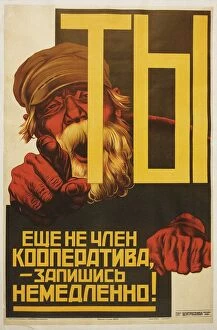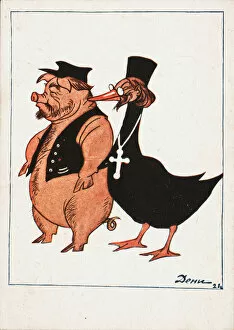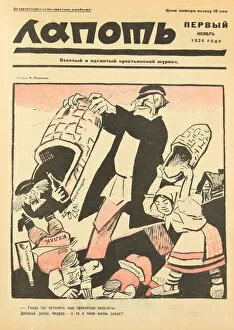Kulak Collection
In the early 1920s, tensions rose between landowners and kulaks in Soviet Russia
All Professionally Made to Order for Quick Shipping
In the early 1920s, tensions rose between landowners and kulaks in Soviet Russia. As the country underwent a period of intense social and political change, these two groups found themselves at odds with each other. The sharpening of knives and teeth became symbolic of their readiness to defend their respective interests. Landowners feared losing their wealth and power, while kulaks sought to protect their economic status as prosperous peasants. Deni's satirical artwork from 1922 depicted this clash between the kulak and the priest, highlighting how both groups were seen as exploiting the masses for personal gain. The image portrayed them as bloodsuckers preying on the vulnerable. By the mid-1920s, calls to eradicate these "parasites" grew louder. The Lapot Satirical Journal's cover in 1924 expressed society's disdain towards landowners who profited off others' hardships. However, not all peasants were considered kulaks; those who joined cooperatives were encouraged to do so immediately through propaganda campaigns like "You are not yet a member of the cooperative - sign up immediately. " (1927-28). This aimed to promote collectivization and strengthen peasant economy. As time went on, collectivization efforts intensified. Posters such as Gustav Klutsis' 1932 artwork emphasized that by completing five-year plans, collectivization would be fully achieved. These posters served as reminders of societal goals during this transformative era. Art also reflected everyday life during this period. Fyodor Kondratov's poster for Flax (1931) showcased theater plays that highlighted agricultural themes central to Soviet life at that time. Viktor Palmov's painting "The Family of Serednyaks" (1929) depicted a typical peasant family affected by collectivization policies. It captured both hope for progress but also potential challenges faced by families like theirs during this tumultuous period.















